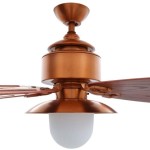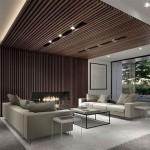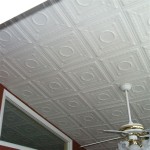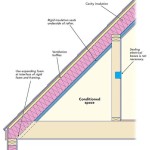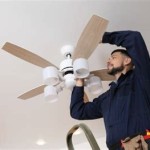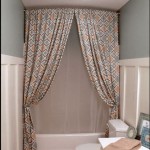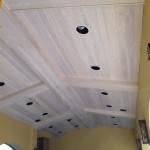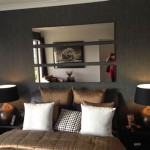False Ceiling Meaning in Hindi: झूठी छत
False ceilings, also known as dropped ceilings or suspended ceilings in English, are referred to as "झूठी छत" (jhoothi chhat) in Hindi. The term literally translates to "false roof," accurately reflecting its nature as a secondary ceiling constructed below the main structural ceiling of a room.
False ceilings serve both aesthetic and functional purposes. They offer a way to conceal unsightly elements such as wiring, ductwork, and pipes, while also providing a platform for integrating lighting fixtures and other building services. Furthermore, they can enhance the acoustics and thermal insulation of a room.
Several materials are commonly used in the construction of false ceilings. Gypsum board, also known as plasterboard or drywall, is a popular choice due to its affordability, ease of installation, and fire-resistant properties. Gypsum boards come in various thicknesses and sizes, offering flexibility in design.
Mineral fiber tiles are another widely used material. These tiles are lightweight, offer good sound absorption, and are available in a range of textures and patterns. They are particularly suitable for commercial spaces and offices where noise control is a priority.
Metal panels, typically made of aluminum or galvanized steel, are chosen for their durability and sleek appearance. These panels are often used in modern and industrial-style interiors. They can be perforated to enhance acoustic performance.
Wooden panels or planks can add a touch of warmth and elegance to a space. They offer a natural aesthetic and can be customized with various finishes and stains. However, they are generally more expensive than other options and require more maintenance.
PVC (Polyvinyl Chloride) panels offer a cost-effective and waterproof solution. They are easy to install and maintain, making them a popular choice for bathrooms and kitchens. PVC panels are available in various colors and designs, offering a wide range of aesthetic options.
Pop false ceilings, short for Plaster of Paris, are a common choice in residential applications in India. Pop offers design flexibility and a smooth finish. It allows for intricate designs and patterns to be created, offering a customizable aesthetic appeal. However, Pop ceilings can be more susceptible to moisture damage compared to other materials.
The installation process of a false ceiling involves creating a framework of metal grids suspended from the main ceiling. These grids provide support for the chosen ceiling material, whether it be gypsum boards, tiles, or panels. The space between the false ceiling and the structural ceiling allows for the concealment of services and the integration of lighting fixtures.
The benefits of installing a false ceiling extend beyond aesthetics. They play a significant role in improving the thermal performance of a room. By creating an air gap between the false ceiling and the main ceiling, they can reduce heat transfer, leading to energy savings and improved thermal comfort.
Acoustic improvement is another key advantage. False ceilings, particularly those made of sound-absorbing materials like mineral fiber tiles, can significantly reduce noise levels within a room. This is particularly beneficial in spaces like offices, classrooms, and theaters where noise control is crucial.
Fire safety is also enhanced by certain false ceiling materials. Gypsum boards, for instance, are inherently fire-resistant and can help contain the spread of fire in the event of an emergency.
Maintenance of a false ceiling depends largely on the material used. Regular cleaning and occasional repainting might be required for some materials, while others might require minimal maintenance.
The cost of a false ceiling varies depending on factors such as the material chosen, the size of the area to be covered, and the complexity of the design. Gypsum board ceilings are generally the most affordable, while wooden or metal ceilings tend to be more expensive.
Choosing the right false ceiling material depends on a variety of factors including budget, aesthetic preferences, functional requirements, and the specific conditions of the space. Considering these factors will ensure the selection of a false ceiling that meets both practical and aesthetic needs.
In conclusion, false ceilings, or झूठी छत, offer a versatile and practical solution for enhancing both the aesthetics and functionality of interior spaces. From concealing unsightly services to improving acoustics and thermal insulation, they offer a range of benefits for residential and commercial applications alike.

फ ल स ग क ब र म Contractorbhai

फ ल स ग क गत और भ Civillane

False Ceiling Part 1 In Hindi

फ ल स ग क तन तर ज त ह Diffe Types Of False Ceiling

False Ceiling फ ल स ग लगव ए गर म य घर क बन Want To Keep Your Home Cool This Summer Install Navbharat Times

ज प सम फ ल स ग इ ट शन और ड इन क ए

False Ceiling Definition Benefits And Various Types Happho

ज प सम फ ल स ग इ ट शन और ड इन क ए

फ ल स ग क यद और न य ह Best Gypsum Board False Ceiling Design For Home

False Ceiling Types Of Panels Or Tiles Commonly Used In And Their S The Economic Times
Related Posts

